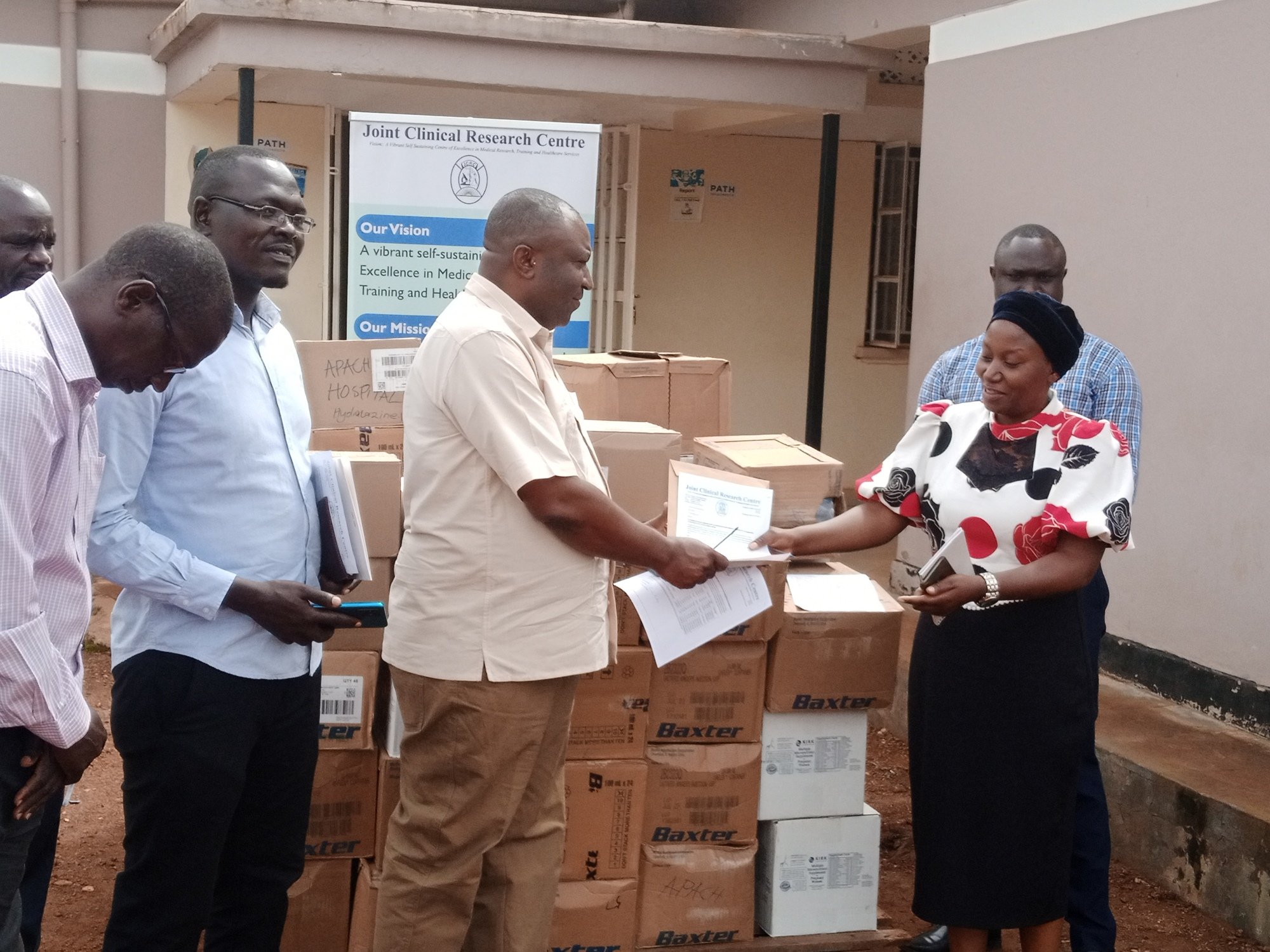Prime
Lira registers over 1,800 new HIV infections

Dr Francis Leone Oceng, the Apac District acting health officer (centre), receives a consignment of complementary drugs to antiretroviral drugs from Dr Mary Namubiru of Joint Clinical Research Centre in Apac Town on Sunday. Photo/ PATRICK EBONG
What you need to know:
- At least 1,851 new cases of HIV infections have been registered in the area between September 2022 and October 2023, especially among adolescents between the ages of 15 and 24 years, with the majority being girls.
Health experts have raised concern over the rampant new cases of HIV/Aids infections in Lira City.
At least 1,851 new cases of HIV infections have been registered in the area between September 2022 and October 2023, especially among adolescents between the ages of 15 and 24 years, with the majority being girls.
This is attributed to a number of factors including commercial sex as a result of rising costs of living, gender-based violence, drug abuse, alcoholism, promiscuous lifestyles, and increase in cross-generational sex.
Currently, the prevalence rate of HIV infections in Lira City stands at 12.1 percent against the national 5.1 percent.
Dr Hillary Okello, the city’s HIV coordinator, said 19,600 people living with HIV/Aids in Lira City are on treatment. Of these, about 3,300 have disappeared and their current status is unknown.
“The President championed the fight and everybody was able to embrace it. The national prevalence, which was above 18 percent, managed to drop to the current 5.1 percent,” Dr Okello said during the World Aids Day commemoration held at the Mayor’s Garden in Lira City.
He added: “But the unfortunate bit is that as we look at the drop in prevalence rate in the whole country, Lira City is on the increase. As I talk now, Lira City is number six in the whole country with a prevalence rate of 12.1 percent.”
Dr Okello said 90 percent pf people living with HIV/Aids in Lira City have viral load suppression, meaning they are taking their medication properly.
He added that the increasing new infection rate is worrying because apart from the youth, expectant mothers are also getting infected.
He further said a total of 919 of expectant mothers tested HIV-positive when they went for their first antenatal between September 2022 and October 2023.
“Ending HIV by 2030 means there should be no new infection. Nobody should be dying of HIV/Aids. Besides, there should be no discrimination,” Dr Okello said.
He added that over the last one year, they lost 78 people to HIV/Aids-related illnesses, something that should not be happening.
“To make it worse, we are struggling to enrol people on treatment but as we enrol, many also drop off. About 3,318 people just disappeared, either they have abandoned treatment or they have changed where they are receiving the medicine from,” he said.
Mr Ibrahim Mukamba, deputy Resident City Commissioner of Lira City West Division, said: “The purpose of this [Wold Aids] day is to communicate and emphasise on strategies and to consult on key issues that have always guided the behaviours of communities to survive with HIV/Aids.”
He asked people to behave and change for the better to end HIV/Aids by the year 2030.
“The public should go for testing at any government health facility so that when results turn HIV-positive, they enrol on treatment when their body immunity is still strong,” he added.
Magnitude
According to the Uganda Population-based HIV Impact Assessment (UPHIA) survey of 2017, there were 148,442 HIV-positive people living in the nine districts of Lango Sub-region. The highest number of HIV was registered in Amolatar, Kwania and Apac
But health experts are concerned that this number might have increased tremendously within three years after the UPHIA survey. By September 2020, the number of HIV-positive people enroled on treament in the Lango Sub-region was 86,758.




